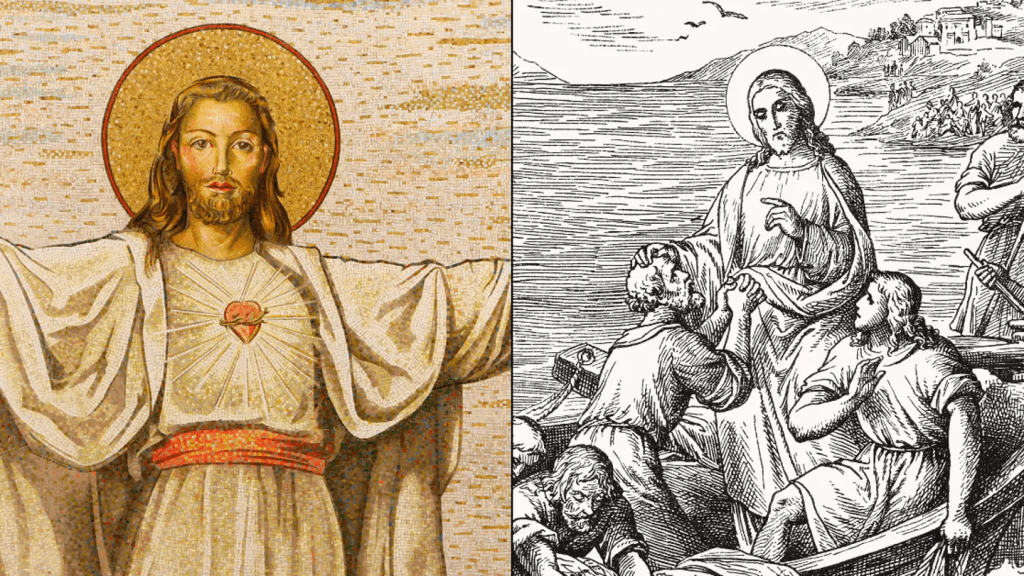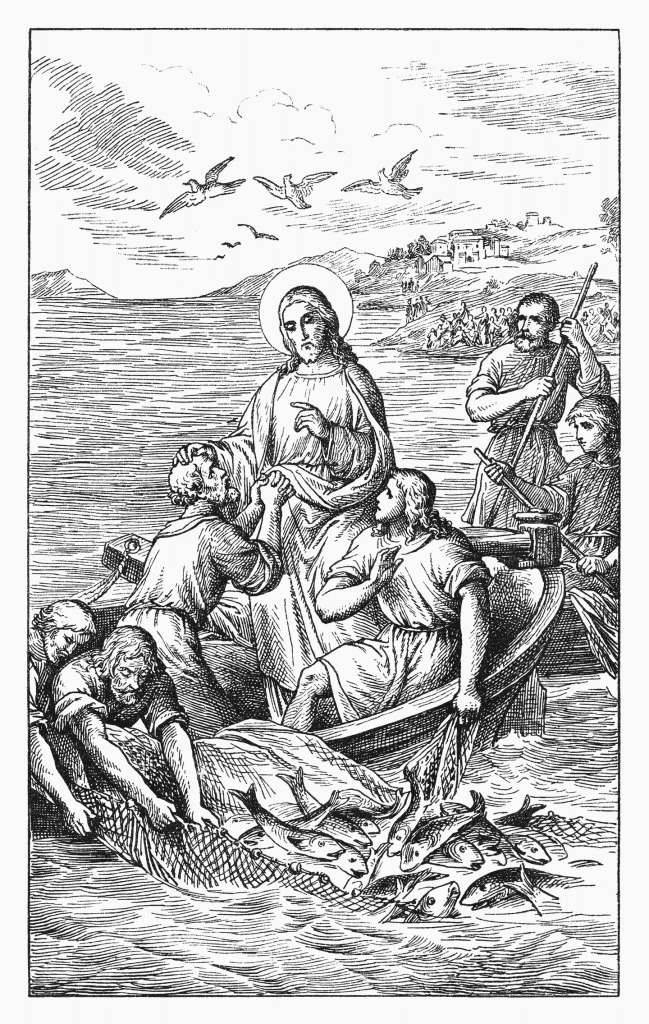The stories of Jesus Christ performing miracles have captivated believers and intrigued scholars for centuries. While many consider these events acts of divine power, some scientists have started exploring whether natural phenomena might explain certain miracles. One biblical event that’s gained particular scientific attention is the “miraculous catch of fish,” where Jesus instructs his disciples to cast their nets, leading them to an enormous haul. Recently, researchers studying the Sea of Galilee suggest there may be a natural explanation behind this extraordinary story.

The Miraculous Catch of Fish: A Biblical Account
The “miraculous catch of fish” is recorded twice in the New Testament, in the Gospels of Luke and John. In both accounts, Jesus and his disciples are on the Sea of Galilee, struggling to catch fish. Jesus instructs them to cast their nets one more time, and they catch an abundance of fish. The account in Luke places this event early in Jesus’ ministry, while John’s Gospel recounts it after Jesus’ resurrection. According to John, they caught precisely 153 fish, a detail that has intrigued readers and scholars alike.
For many, this story is a testament to faith and divine intervention. Yet some researchers believe that science may provide a possible explanation for this miraculous catch.
The Science Behind the Sea of Galilee’s Fish-Kill Events
The Sea of Galilee, where this miracle reportedly took place, has a unique environment that can sometimes lead to what scientists call “fish-kill events.” Researchers from the Kinneret Limnological Laboratory have been studying these occurrences and believe they may shed light on the biblical account.
Understanding Fish-Kill Events
Fish-kill events happen when environmental conditions cause a rapid and mass death of fish in a specific area. These occurrences are often due to fluctuations in water temperature, oxygen levels, or the presence of harmful algae. In the case of the Sea of Galilee, researchers identified a layer of cold, oxygen-depleted water that lies beneath the warmer surface. Under certain conditions—like strong winds or wave activity—this cold layer can rise, trapping fish in low-oxygen waters. When fish are caught in these conditions, they quickly die, creating an area with a dense concentration of dead or nearly dead fish.

Why Fish-Kill Events Could Explain the Miracle
If Jesus’ instruction to cast the nets coincided with a fish-kill event, this would explain why the disciples were able to catch such an enormous amount of fish in a short time. The abundance of fish would appear miraculous to the disciples, who may not have known about the underlying environmental causes. Additionally, the timing and location of the event could have aligned perfectly, allowing Jesus and his followers to make their incredible catch.
The Role of Environmental Factors in the Miracle
The Sea of Galilee’s unique environmental conditions make it particularly susceptible to fish-kill events. Scientists have discovered that wind, water temperature, and oxygen levels all play a role in causing these events, which tend to happen in specific regions of the lake. Interestingly, these locations match the areas mentioned in the Bible, adding further credibility to the idea that the miracle could have a natural explanation.
Seasonal Fish Behavior and Timing
Fish behavior also changes seasonally, influenced by temperature and food availability. During certain times of the year, fish may gather in particular spots in the lake, increasing the likelihood of a successful catch. If the disciples were fishing at a time when fish naturally congregated, this could further explain why they caught such a large quantity in one go.
Does Science Take Away from the Miracle?
The scientific explanation behind the “miraculous catch” may prompt some to question whether this event was truly a miracle. However, many believers argue that even if natural factors contributed, the timing and circumstances of the catch still reflect divine intervention. The fact that Jesus knew exactly when and where to cast the nets could itself be seen as a miraculous insight or act of faith.
This perspective suggests that science and faith don’t have to be mutually exclusive. Instead, they can complement each other, offering a fuller understanding of events that hold both spiritual and natural significance.
Other Biblical Miracles and Possible Scientific Explanations
The “miraculous catch of fish” isn’t the only biblical event that has been explored through a scientific lens. Several other miracles have also been studied for possible natural explanations:
- The Parting of the Red Sea: Some scientists hypothesize that strong winds or tidal events could have temporarily parted the sea, allowing safe passage.
- Turning Water into Wine: Chemical reactions or fermentation processes have been suggested, although this remains a more symbolic and less scientifically plausible explanation.
- Walking on Water: Scholars have proposed that Jesus may have walked on ice or shallow water, though these theories are speculative.
These explanations don’t necessarily detract from the stories’ spiritual meaning. Rather, they offer alternative perspectives that may deepen understanding of the events.
Faith and Science: Working Together for a Deeper Understanding
While scientific explanations may demystify certain aspects of miracles, they can also enhance our appreciation for these stories. Science seeks to answer the “how,” while faith often seeks to answer the “why.” For those who believe, understanding the natural phenomena behind biblical events doesn’t lessen the role of divine timing or purpose. In fact, some may argue that the complexity of nature itself is a testament to a higher power.
In the case of the “miraculous catch of fish,” the scientific explanation of fish-kill events adds a layer of authenticity to the story, bridging the gap between faith and knowledge. By considering the possibility that Jesus’ guidance aligned with a natural event, believers can see this moment as an example of perfect timing orchestrated by a higher power.
The Impact of Miracles on Faith and Tradition
Miracles hold a special place in religious tradition, offering believers a sense of hope, inspiration, and connection to the divine. They are seen as moments where the natural and supernatural meet, reinforcing the power and love of a higher power. Stories like the “miraculous catch of fish” resonate not only because of their wonder but because of the messages they convey—faith, trust, and abundance.
Even with scientific explanations, these stories continue to inspire believers worldwide. For many, the real “miracle” lies in the transformative impact these events have on people’s lives, encouraging them to see life’s challenges and blessings through a lens of faith.
Conclusion: A New Perspective on an Ancient Miracle
The story of Jesus’ “miraculous catch of fish” has captivated believers and scholars alike for centuries. While some may see the scientific explanation as detracting from the miracle, others view it as a way to deepen understanding and bridge the gap between faith and science. The possibility that natural phenomena contributed to this biblical event only enhances its sense of wonder, reminding us that the beauty of faith often lies in the mystery of the unknown.
Whether you view the catch as a miracle of divine intervention or a marvel of nature, the story continues to hold meaning for people around the world. At the intersection of faith and science, this tale reminds us that there is often more to reality than meets the eye, and that the mysteries of life—whether explained or unexplained—are a powerful source of inspiration and belief.


